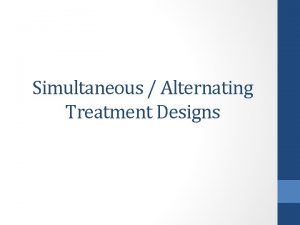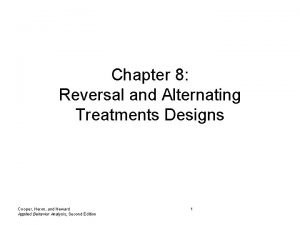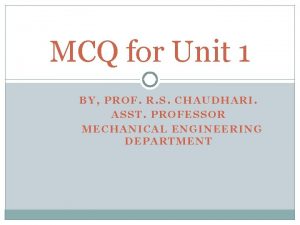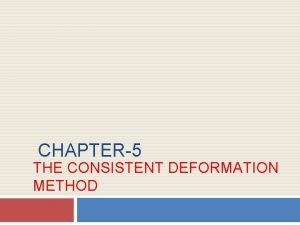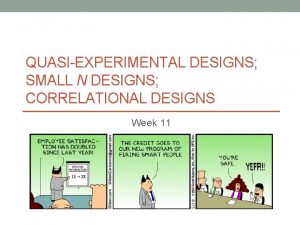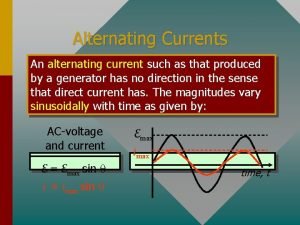Simultaneous Alternating Treatment Designs Also known as Multielement











- Slides: 11

Simultaneous / Alternating Treatment Designs

Also known as: • Multi-element baseline design • Multiple schedule design • Concurrent schedule design

Overview • Efficient for comparing effects of 2 or more treatments • Alternated in a variety of ways • A distinct stimulus is often associated with each treatment • Involves prediction, verification, and replication

Logic of Simultaneous or Alternating Treatments Design • Experimental control is demonstrated with different levels of response in different treatments • Allows for quick comparison • Stresses importance of evaluating individualized treatments

Design Variations • Single phase without no-treatment control condition • Single phase with one no-treatment control condition • Two phase with initial baseline • Three phase with baseline and final best treatment phase

Without No-Treatment Control Condition

With No-Treatment Control Condition

With Baseline and Final Best Treatment Phase

Design Advantages • Does not require treatment withdrawal • Speed of comparison • Minimizes irreversibility problem • Minimizes sequence effects • Can be used with unstable data • Can be used to assess generalization of effects • Intervention can begin immediately

Design Disadvantages • Multiple treatment interference • Unnatural nature of rapidly alternating treatments • Limited capacity (max. of 4 conditions) • Selection of treatments – should be significantly different from one another

Conclusions • Good way to examine a lot of options • Need to be careful to not do too many • Client may become overwhelmed • Client may become confused about what to do • You may lose track of what you are doing.
 Simultaneous treatment design
Simultaneous treatment design Aba reversal design
Aba reversal design Dressmaker's carbon paper is usually used in this method
Dressmaker's carbon paper is usually used in this method Floral design history
Floral design history English georgian floral design
English georgian floral design Uniform pressure condition are used
Uniform pressure condition are used Consistent deformation method is
Consistent deformation method is Views technical drawing
Views technical drawing Also known as electron pooling
Also known as electron pooling Method study symbols
Method study symbols Disadvantages of sieve shaker
Disadvantages of sieve shaker Classification of emulsifying agents
Classification of emulsifying agents
